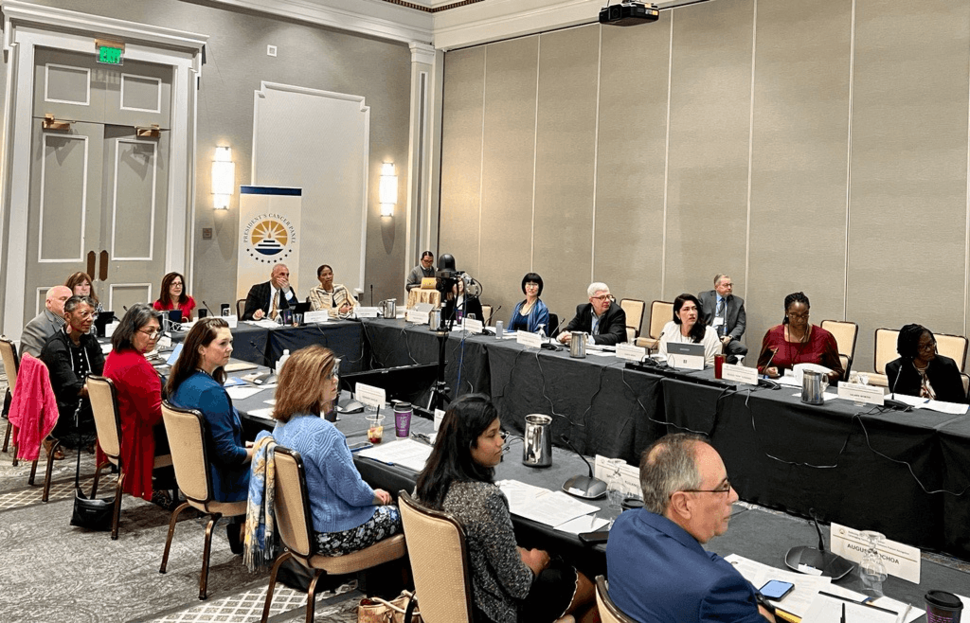Meeting 1 Recap: Opportunities for Enhancing Patient Navigation
Join us on X (Twitter) by following @PresCancerPanel, and connect with us on LinkedIn.
On October 17, 2023, the President’s Cancer Panel convened the first of three public meetings on how technology can be leveraged for cancer patient navigation. Patient navigation is an evidence-based, person-centered healthcare service delivery model that aims to overcome individual and systemic barriers to accessing timely and quality cancer care. Navigation may be carried out by various members of the healthcare team, including, but not limited to, patient navigators, community health workers, social workers, physicians, and nurses. Navigation may also be achieved through systems and resources that are not directly managed or delivered by a member of the healthcare team.
Health technologies have the potential to transform patient navigation. However, technology must be thoughtfully designed and implemented to ensure accuracy and utility and to avoid negative unintended consequences, including exacerbation of existing cancer health disparities.
The meeting focused on gaps and opportunities at the intersection of technology and patient navigation. Themes and priorities that emerged during presentations and discussion included:
- The diversity of patient needs that navigation can address
- Barriers to the widespread use of existing technologies
- How technology can support patient navigators and patients
- Technological and care challenges in remote and under-resourced areas
- Building trust between communities, health systems, and technology
- Navigation and technology considerations for different sociodemographic groups
- The need for culturally appropriate approaches to navigation and technology use
- Potential downsides and risks of adopting new technologies for patient navigation
- How to develop and implement best practices for navigation technology
Participants emphasized the need for greater patient navigation support at every point along the cancer care continuum, from screening to survivorship. Connecting patients with care, helping them navigate the healthcare system, and supporting them through moments of transition are areas of high priority. Every patient is unique, and effective navigation requires considering each person’s needs, circumstances, and barriers to care over time. Navigators must be able to tailor their strategies to meet an individual’s specific needs regardless of their cancer type, race or ethnicity, geography, or income. While navigators’ roles and the resources they provide vary widely by geography and health system, the most urgent support often concerns access to basic resources like housing, food, and transportation. The financial toxicity associated with cancer and its treatment often prevents patients from being able to access and benefit from life-saving treatment.
Current technological solutions are unevenly implemented and may create barriers of their own. The utility of these tools will depend on technological literacy; access to devices, privacy, and the internet; legal and ethical considerations; trust of technology, research, and medical professionals; and consistent training for health system staff. Insufficient policy and financial support for vital tools like telehealth can further increase inequities.
Artificial intelligence is a growing area that may expand access to patient navigation, particularly in connecting patients with resources in their communities. These technologies are designed to support, rather than replace, the navigation workforce. Participants noted that the success of any new tools will depend on their interoperability with existing technologies like electronic health records and patient portals, as well as their usability by both patients and providers. Including these groups in the design, development, and testing process is key.
The remaining two meetings in the series, on November 2–3 and December 7, are focused on technology and policy, respectively. The presentations and moderated discussions at these meetings will inform the Panel’s recommendations, which will be included in a report to the President of the United States after the conclusion of the meeting series.
A recording of the meeting is available now on the President’s Cancer Panel website. The meeting summary will be available there this winter.
